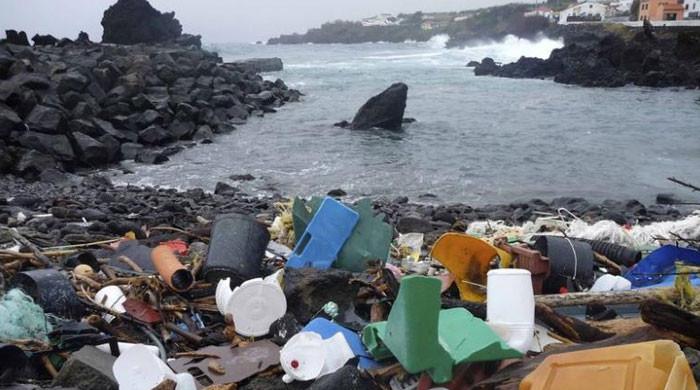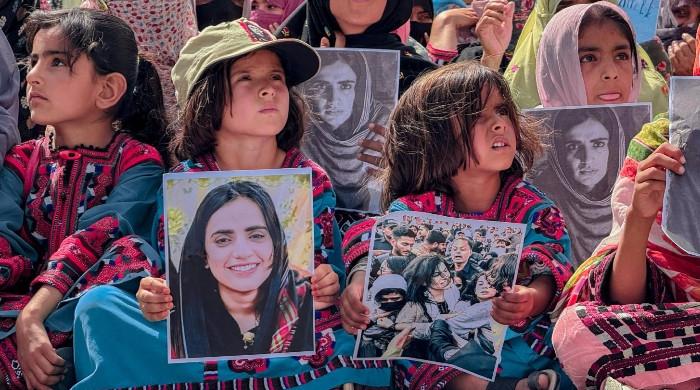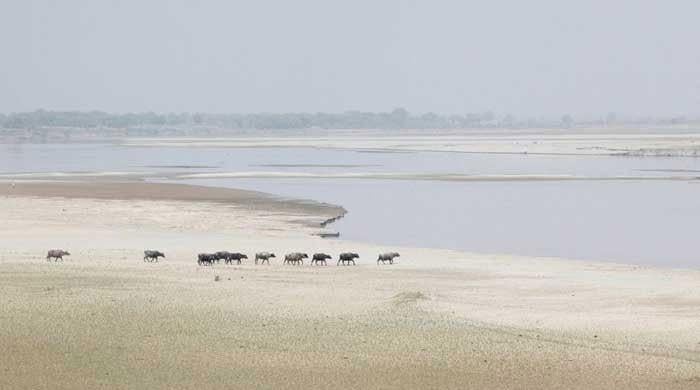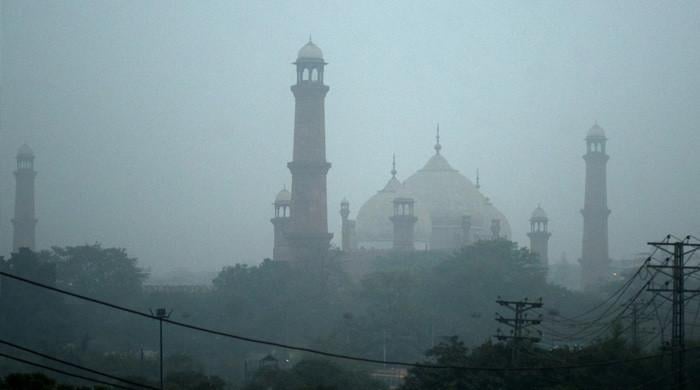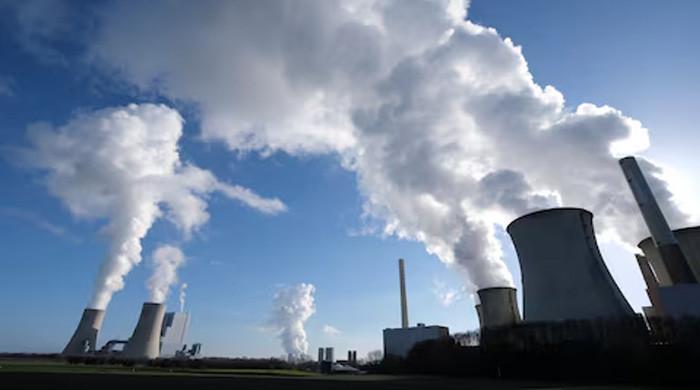Shepherding the economy
The next government needs to engage with its political opponents to facilitate comprehensive economic recovery
February 12, 2024

The phrases "revival and recovery of Pakistan's economy," "bringing back the era of economic growth," and "working towards the economic prosperity of Pakistan" echoed prominently in the pre-election rhetoric, captivating voters with promises of economic rejuvenation. However, the post-election scenario reveals the challenges inherent in translating these promises into concrete actions. The ambiguity surrounding the interpretation of "recovery and revival" poses significant hurdles for the incumbent government's economic management. In this context, it becomes imperative to explore Pakistan's economic landscape and understand the multifaceted challenges that need to be addressed.
Despite achieving some positive results through consistently implementing stabilisation policies during the last few months, the country has a struggling economy, soaring inflation, increasing poverty and food insecurity, low forex reserves and weakening infrastructure. The current account recently showed a surplus and the value of the rupee versus the dollar has remained stable. However, this may start reversing once the import flow resumes and the demand for dollars increases. The growth rate plummeted into negative territory in 2023, and even the projected 2% growth for the current fiscal year is insufficient, given the annual population growth of 2.5%.
For the ordinary citizen, economic recovery should translate into a tangible reduction in the cost of living. However, despite baseline improvements, the national consumer price index, reflecting the cost of essential goods and services, including food and energy, remains around 30% year on year. The escalating prices of energy (electricity, gas, LPG, kerosene oil, petrol, diesel and CNG) and the rising cost of ensuring food security demand immediate attention.
Tariff rationalisation to contain the monstrous energy sector circular debt slowed down the pace of disinflation. (The cumulative ECD has exceeded the total annual share of provinces from the federal divisible pool.) The recent gas tariff (and anticipated electricity tariff) increase will add to headline inflation in the coming months. Likewise, the impact of the demand-supply mismatch on food prices in Ramazan will further aggravate inflation.
The focus on energy costs often overshadows the critical issue of food security. The World Food Programme has revealed that nearly 51% of a typical Pakistani household's monthly income is allocated to food expenses. Compromises on the quality and quantity of food intake, driven by inflexible costs like utility bills, rent and education, contribute to a deteriorating situation of food insecurity and malnutrition. Recent data from the FAO highlights a threefold surge in moderate to severe food insecurity from 14.1% in 2014-2016 to 42.3% in 2020-2022, underscoring the vulnerability of a significant portion of the population to unforeseen shocks, such as pandemic, currency depreciation, and extreme weather events like floods of 2022.
Factors beyond domestic control, such as tensions in the Middle East and the unpredictability of the upcoming monsoon season, further compound Pakistan's economic challenges. Escalations in the Middle East could drive global energy prices higher, exacerbating the economic woes of fuel-importing nations like Pakistan. A volatile monsoon season poses risks to food security and potential exports and introduces additional burdens through increased imports and rehabilitation costs.
An imminent challenge for the next government lies in reducing the cost of living by addressing the costs of both energy and food. While the good intentions of any coalition that forms the government are acknowledged, caution is warranted to avoid populist measures that could jeopardise macroeconomic recovery. A crucial aspect to consider is Pakistan's substantial debt, which stood at $239.2 billion or 82% of GDP at the end of September 2023. With the need to pay almost a quarter of its GDP (or $81.2 billion) in debt service during the current fiscal year, prudent fiscal policies are essential to ensure sustainability.
Here, it is important to highlight that 57.7% of Pakistan’s debt is domestic; the rest is external. 18% is owed to multilateral creditors, 12% to China and Chinese Commercial banks and 5% to Saudi Arabia, Japan and France. The rest is commercial bonds, etc.
Look at the quantity and quality of Pakistan’s external debt and then read a paragraph on public debt from the IMF’s review report released last month. It says, “Despite a notable improvement in market sentiment since June (2023), risks to debt sustainability remain acute given large gross financing needs and scarce external financing. Assuming decisive implementation of programme policies, which would be sustained over the medium term, and adequate multilateral and bilateral financing, public debt would remain sustainable.”
Simply put, the IMF has warned that Pakistan needs to borrow more dollars to pay back its existing debt and debt services. Additional borrowing depends on the new government’s consistent implementation of course correction policies, including its resistance to the temptation to dole out non-targeted subsidies (including those on food and fuel); provide tax exemptions; and artificially stabilise the exchange rate; contain and reduce energy circular debt and expenses on loss-making state-owned enterprises; and execute social programmes (especially on health and education) outside the BISP (to avoid overstretching BISP).
The IMF goes on to warn, “However, policy slippages, insufficient financing or elevated gross financing needs, the realisation of contingent liabilities and downward risks to the baseline could all undermine the narrow path to debt sustainability. With low reserves and scarce market financing, FX payments will remain a persistent challenge, and real interest rates have become an adverse driver of debt dynamics, with interest absorbing more than half of general government revenue.”
Any deviation from course correction measures will make Pakistan’s debt unsustainable. These course correction measures are not new and have been a part of many previous IMF programmes. However, successive governments have committed to taking these measures and then violated the commitments after receiving a loan tranche. This has led to delays in the disbursement of planned financing from both multilateral and bilateral lenders, posing major risks to debt sustainability and the value of the rupee, given limited buffers of foreign exchange reserves.
Such deviations were often made under political compulsions: to seek popularity through unfinanced public expenditures, to soothe the angry coalition partners, or under pressure from a protesting opposition. Political instability remained a major trigger of political compulsions.
As a new government assumes office, striking a balance between economic recovery for the masses and macroeconomic stability becomes crucial. Navigating this delicate equilibrium requires that the next coalition government reduce the political temperature and engage with political opponents to facilitate a smoother path toward comprehensive economic recovery. (Sustainable Development Policy Institute and the UNDP-Pakistan have proposed one such plan, National Economic Recovery Plan). The journey ahead is challenging, but strategic decision-making and adherence to sound economic principles can pave the way for a resilient and sustainable economic future for Pakistan.
The writer heads Sustainable Development Policy Institute. His X handle is @abidsuleri
Disclaimer: The viewpoints expressed in this piece are the writer's own and don't necessarily reflect Geo.tv's editorial policy.
Originally published in The News on Sunday





